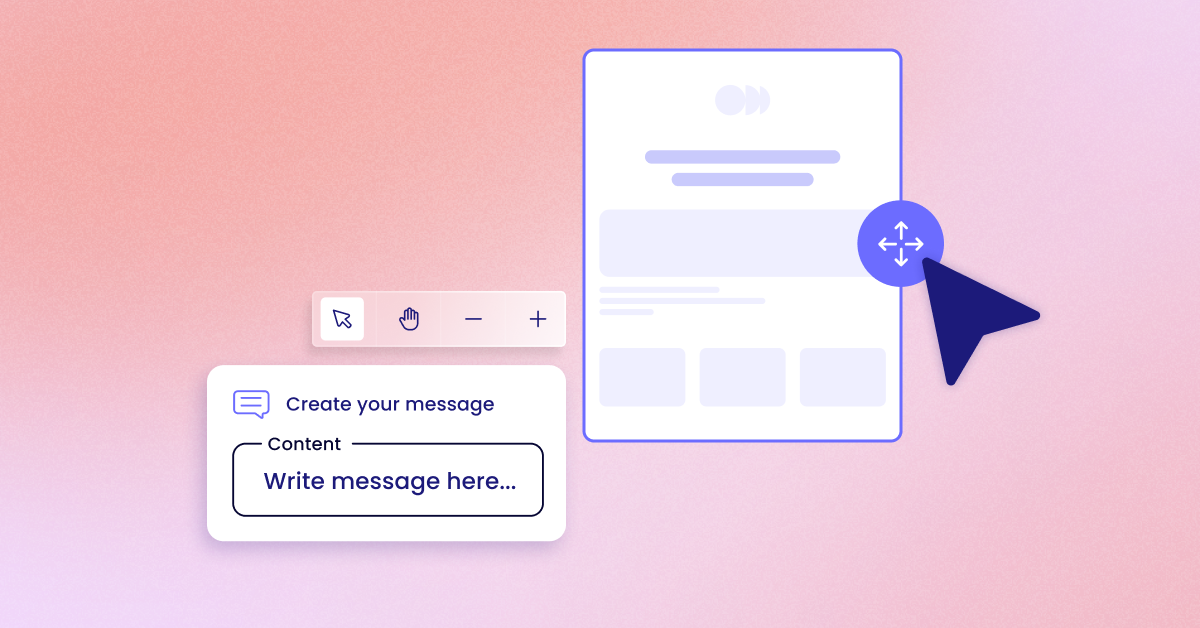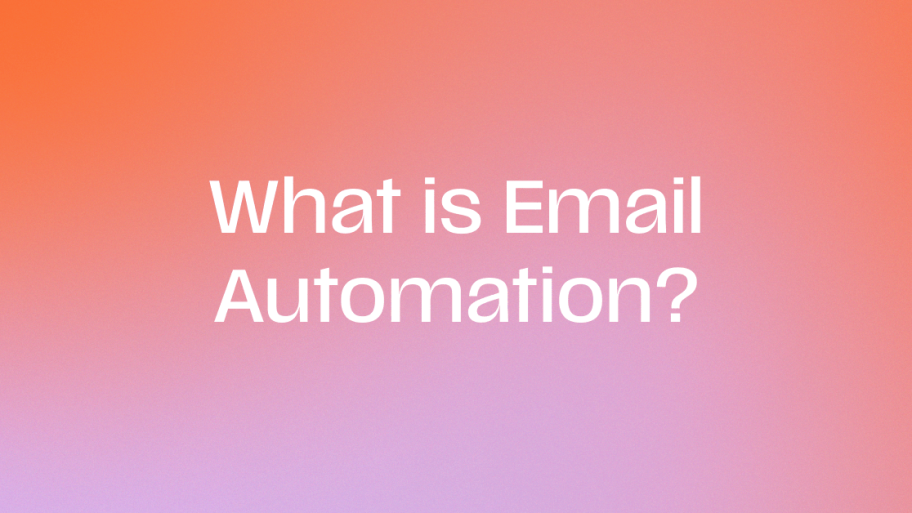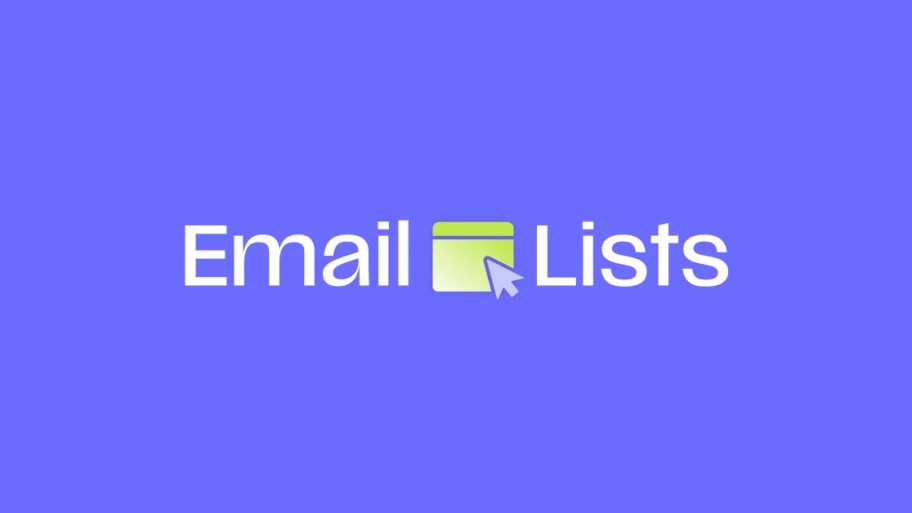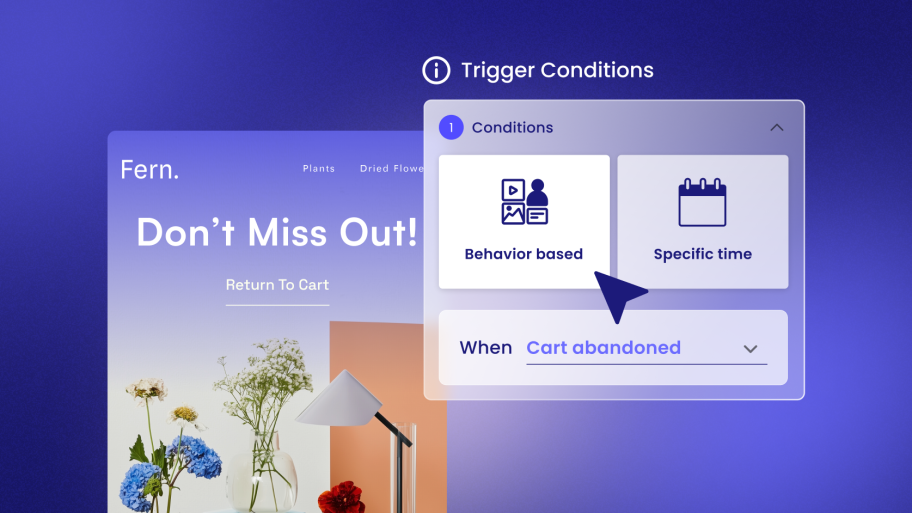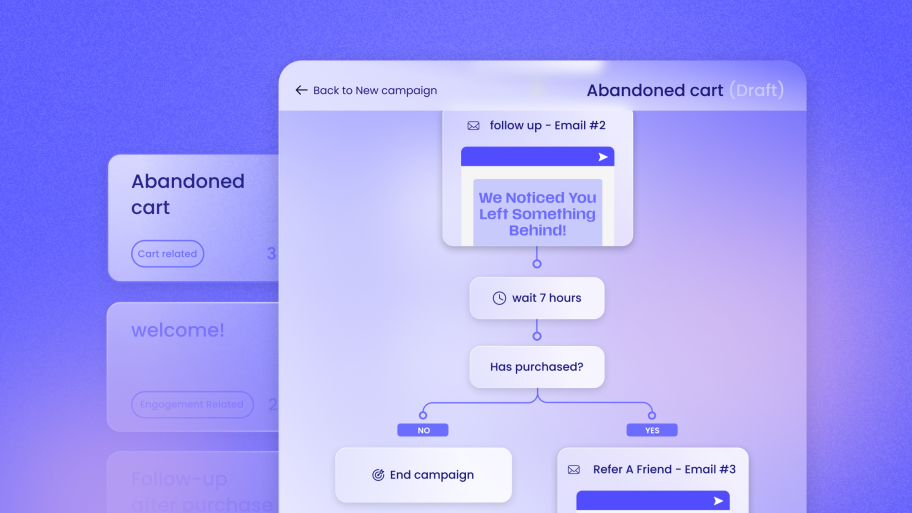The good news? This isn’t a lost cause. In fact, it’s one of your single biggest opportunities for revenue growth. The solution is the abandoned cart email—a simple, automated, and incredibly effective tool for bringing would-be customers back to complete their purchase.
This guide will go beyond the basics. We’ll dive into 17 actionable best practices, complete with examples, that will help you craft a high-converting abandoned cart strategy. Implemented correctly, these techniques can recover a significant percentage of your lost sales and turn hesitant shoppers into loyal customers.
First, What Exactly Are Abandoned Cart Emails?
An abandoned cart email is an automated follow-up message (or a series of messages) sent to a shopper who added items to their cart but left your website without finishing the checkout process.
For this to work, the shopper must have entered their email address at some point before leaving. This is often captured at the beginning of the checkout flow or if they are already logged into their account on your store.
The power of these emails lies in their perfect timing and hyper-relevance. The shopper has already demonstrated strong purchase intent. They didn’t just browse; they picked specific items. The email acts as a timely and personal reminder, catching them while the products are still on their mind. The results speak for themselves: data shows that abandoned cart emails can recover anywhere from 5% to over 20% of lost sales, making them one of the highest ROI activities in e-commerce marketing.
The 17 Best Practices for Abandoned Cart Emails
Mastering abandoned cart emails means optimizing every element, from the moment they’re sent to the words you use. Let’s break down the 17 essential best practices that will make the biggest impact.
Strategy & Timing Practices
The foundation of a successful campaign is a solid strategy built around timing and frequency.
1. Nail the Timing of Your First Email
The first hour after a cart is abandoned is the golden hour. The customer’s intent is at its peak, and the reason for leaving might be a simple distraction—a phone call, a crying baby, or a lost internet connection.
Send your first email within 1 to 3 hours of abandonment.
- Why it works: It’s fast enough to be a helpful reminder but not so immediate that it feels intrusive or creepy. Waiting longer than a few hours gives the shopper time to lose interest, forget what they were buying, or worse, purchase from a competitor.
- Example: A shopper abandons their cart at 2:15 PM. Your automation should be configured to send the first email between 3:15 PM and 5:15 PM.
2. Craft a Multi-Email Sequence
A single email is good, but a sequence (or “flow”) is far better. Not everyone is ready to buy after the first reminder. A multi-email sequence allows you to try different angles—from a simple reminder to creating urgency to offering an incentive.
The industry standard is a three-email sequence.
- Why it works: It gives you multiple chances to connect with the shopper without overwhelming them. Each email can have a distinct purpose and tone.
- Example Sequence Structure:
- Email #1 (1-3 hours later): The Gentle Reminder. “Did you forget something?”
- Email #2 (24 hours later): The Helpful Follow-up. “Your cart is waiting…”
- Email #3 (2-3 days later): The Final Offer. “A special treat just for you.”
3. Optimize Send Times for Each Subsequent Email
Don’t just send all your emails at the same time of day. The timing of your second and third emails should also be strategic.
Space your follow-up emails 24 to 48 hours apart.
- Why it works: This cadence keeps your brand top-of-mind without flooding the customer’s inbox. It gives them time to reconsider their purchase without feeling pressured.
- Example Timing:
- Cart Abandoned: Monday, 3 PM
- Email #1: Monday, 4 PM
- Email #2: Tuesday, 4 PM
- Email #3: Thursday, 10 AM (Trying a different time of day can sometimes catch the user when they are more receptive).
4. Stop the Sequence Immediately After a Purchase
This is a non-negotiable technical requirement. Nothing is more frustrating for a customer than receiving an email asking them to complete a purchase they’ve already made.
Your automation tool must be smart enough to automatically remove a customer from the abandoned cart flow the moment they complete a purchase.
- Why it works: It prevents a negative customer experience and makes your brand look competent and professional.
- How to do it: This functionality should be a core feature of any reputable e-commerce email marketing tool. When choosing a solution, especially for WooCommerce, look for one with deep, real-time integration. A WordPress-native toolkit is often the best choice, as it ensures seamless data syncing between your store and your marketing platform, preventing these kinds of errors.
Content & Copywriting Practices
Once your timing is set, the content of your emails determines whether a shopper clicks “Return to Cart” or “Delete.”
5. Write Irresistible, Action-Driven Subject Lines
Your subject line is the gatekeeper. If it doesn’t grab attention, the rest of your email doesn’t matter.
Keep subject lines clear, personal, and intriguing. Use A/B testing to find what works for your audience.
- Why it works: A great subject line stands out in a crowded inbox and creates enough curiosity or urgency to earn an open.
- Examples:
- Simple & Direct: “You left something in your shopping cart.”
- Helpful Question: “Having trouble checking out?”
- Personalized: “Hey Sarah, your items are waiting for you.”
- Intriguing: “Don’t let your favorite items get away.”
- With Incentive: “Here’s 10% off to complete your order.”
- With Urgency: “Your cart expires soon!”
6. Personalize Beyond Just Their Name
Using the customer’s first name is a good start, but true personalization is about the products. The email must feel like it was created just for them.
Dynamically insert the exact items left in the cart, including product images, names, and prices.
- Why it works: It instantly jogs the customer’s memory and reminds them of the specific products they wanted. The visual cue of the product image is incredibly powerful.
- Example: Instead of saying “You left items in your cart,” show them a picture of the exact blue running shoes they were looking at.
7. Use a Conversational, On-Brand Tone
Your abandoned cart email is a form of customer service. Avoid robotic, overly formal language.
Write as if you’re a helpful store associate, not a machine. Your tone should align with your overall brand voice.
- Why it works: A friendly, human tone builds rapport and makes the customer feel valued, not just marketed to.
- Example Tones:
- Playful Brand: “Whoops! Did you get distracted by a squirrel? Your awesome stuff is still here.”
- High-End Brand: “Your selections are waiting. We’ve saved your cart for you to complete your order at your convenience.”
- Helpful Brand: “It looks like you didn’t finish your order. Can we help with anything?”
8. Focus on Benefits, Not Just Features
Don’t just show them the product; remind them why they wanted it in the first place.
Highlight the key benefit of the product or your brand.
- Why it works: Benefits connect with the customer’s emotions and solve their problems. Features are just specs; benefits are the results.
- Example: For a pair of noise-canceling headphones, don’t just say “Active Noise Cancellation.” Say, “Ready for uninterrupted focus? Your quiet space is just a click away.”
9. Incorporate Social Proof
People trust other people. Seeing that others have purchased and loved a product can be the final push a hesitant shopper needs.
Include star ratings, customer reviews, or testimonials directly in the email, right below the product.
- Why it works: Social proof reduces perceived risk and builds trust. It tells the shopper, “This is a good decision; other people have made it and are happy.”
- Example: Below the image of the abandoned product, include a snippet like: “★★★★★ – ‘These are the most comfortable shoes I’ve ever owned!’ – Jane D.”
10. Address Common Objections Proactively
Why do people really abandon carts? Often, it’s due to unexpected costs or uncertainty.
Use your email to address potential barriers like shipping costs, return policies, and customer support.
- Why it works: By answering their unasked questions, you remove friction and build confidence in the purchase.
- Example: Include a small section at the bottom of your email with icons and text like:
- “Free Shipping on Orders Over $50”
- “Easy 30-Day Returns”
- “Questions? Chat with Us 24/7”
Design & CTA Practices
The visual presentation of your email can either guide the user to action or confuse them.
11. Showcase the Abandoned Products Clearly
The products are the star of the show. Don’t bury them.
Use large, high-quality product images and present the cart items in a clean, easy-to-scan layout.
- Why it works: Visuals are processed much faster than text. A clear image instantly reminds the shopper of what they’re missing.
- Design Tip: Use a simple grid or list format. For each item, include the image, product name, size/color (if applicable), and price.
12. Design a Strong, Unmistakable Call-to-Action (CTA)
Your CTA’s job is to get the click. It needs to be impossible to miss.
Use a bold, color-contrasting button with clear, action-oriented text.
- Why it works: A prominent button draws the eye and tells the user exactly what to do next. Vague text links get lost.
- CTA Button Examples:
- “Return to Your Cart”
- “Complete My Order”
- “Take Me Back to My Items”
- “Claim My 10% Discount”
13. Keep the Design Clean and Focused
Don’t distract the user with too many other offers or links. The goal of this email is singular: get them to complete their purchase.
Use a simple, single-column layout with plenty of white space.
- Why it works: A clean design minimizes cognitive load and directs the user’s attention straight to the abandoned items and the CTA. Avoid cluttering the email with links to your blog or new arrivals.
- How to do it: A good drag-and-drop email builder is essential here. Look for a tool that offers clean, modern, and pre-built abandoned cart templates that you can easily adapt to your brand.
14. Ensure Flawless Mobile Responsiveness
Over half of all emails are opened on a mobile device. If your email looks broken on a phone, you’ve lost the sale.
Your email design must be 100% mobile-friendly.
- Why it works: A responsive design ensures a seamless experience regardless of the device. Buttons should be large enough to tap easily, and text should be readable without pinching and zooming.
- How to do it: Any modern email marketing platform should provide this automatically. Always send a test email to yourself and check it on your phone before activating your campaign.
Advanced Tactics & Optimization
Ready to level up? These advanced strategies can squeeze even more revenue out of your campaigns.
15. Use Strategic Incentives (Wisely)
Sometimes, all a shopper needs is a little nudge. A discount can be a powerful motivator.
Offer an incentive—like a percentage discount, a fixed dollar amount off, or free shipping—in the second or third email of your sequence.
- Why it works: An incentive can overcome price sensitivity, which is a major reason for abandonment. Offering it later in the sequence allows you to capture full-price sales from customers who were just distracted.
- Example: “Still thinking it over? Here’s 10% off to help you decide. Use code COMEBACK10 at checkout.”
16. Segment Your Audience for Hyper-Relevance
Not all abandoned carts are the same. Sending the same message to everyone is a missed opportunity.
Segment your abandoned cart flows based on customer data.
- Why it works: Segmentation makes your messages exponentially more relevant and effective.
- Example Segments:
- Cart Value: For carts over $200, offer a higher-value incentive like free shipping. For carts under $50, a 10% discount might be more appropriate.
- New vs. Returning Customers: Send new customers a message that reinforces your brand’s value proposition and includes a welcome offer. For returning customers, acknowledge their loyalty with a message like, “Welcome back! Ready to complete your order?”
- Product Category: If a customer abandons a high-consideration item like a mattress, your email sequence could include more educational content, like a guide to choosing the right mattress or links to top reviews.
17. Go Multi-Channel with SMS
Email is great, but SMS (text messaging) is even more immediate, with open rates often exceeding 98%.
Add an SMS message to your abandoned cart flow.
- Why it works: It cuts through the noise and reaches customers on a channel they check constantly. It’s perfect for a short, urgent reminder.
- Example Multi-Channel Flow:
- Email #1 (1 hour): Gentle reminder.
- SMS #1 (4 hours): “Hi [Name], you left items in your cart at [Store Name]. Tap here to complete your order: [Link]”
- Email #2 (24 hours): Follow-up with social proof.
- How to do it: This requires a communication toolkit that integrates both email and SMS, allowing you to build a single, unified automation flow. A platform like Send by Elementor is designed for this, letting you manage both channels seamlessly within your WordPress dashboard.
Key Takeaways
If you only remember a few things from this guide, make them these:
- Automation is Your Best Friend: Set up an automated 2-3 email sequence. Don’t try to do this manually.
- Timing is Critical: Send the first email within 1-3 hours. This is your best chance to recover the sale.
- Personalize with Products: Always show the actual items the customer left in their cart.
- Be Helpful, Not Pushy: Use a friendly, conversational tone. Focus on helping the customer complete a task they already started.
- Have a Clear CTA: Use a big, bold button that tells the user exactly what to do.
- Save Incentives for Last: Offer a discount in the final email of your sequence to maximize your profit margins.
- Test and Measure: Use a tool with clear analytics to track your open rates, click rates, and recovered revenue. Continuously test to improve your results.
Frequently Asked Questions (FAQs)
Are abandoned cart emails legal? Yes, provided you follow anti-spam regulations like CAN-SPAM (in the US) and GDPR (in the EU). Generally, if a customer has started the checkout process and provided their email, they have given implied consent to be contacted about that specific transaction. However, you must always include a clear and easy-to-use unsubscribe link in every email.
Will I annoy my customers by sending these emails? When done correctly, most customers find them helpful. The key is to provide value, keep the tone friendly, and not send too many messages. A sequence of 2-3 well-spaced emails is the sweet spot that avoids being annoying.
When is the best time to offer a discount? It’s almost always best to offer an incentive in the second or, ideally, the third email of your sequence. This gives customers who were simply distracted a chance to purchase at full price first.
What if a customer abandons their cart more than once?
A good automation system will handle this. Typically, if a customer abandons a new cart, they will be re-entered into the beginning of the sequence. The system should be smart enough not to send them multiple, overlapping abandoned cart flows at the same time.
Do I need to be a developer to set this up?
Not at all. Modern e-commerce marketing tools are designed for store owners and web creators, not coders. Platforms built specifically for WordPress, like Send by Elementor, offer pre-built automation templates and intuitive drag-and-drop editors that allow you to launch a professional campaign in minutes.
Conclusion
Abandoned carts aren’t a sign of failure; they are a sign of intent. They represent a pool of highly qualified leads who are just one step away from becoming customers. By implementing a strategic, automated abandoned cart email campaign using the best practices outlined above, you can build a powerful engine for recovering lost revenue that works for you 24/7.
Start with a simple three-email sequence. Focus on being helpful and making it easy for the customer to pick up where they left off. As you grow, you can begin to experiment with more advanced strategies like segmentation and multi-channel messaging. The effort you put into your abandoned cart strategy will pay for itself many times over, turning missed opportunities into a consistent and reliable stream of income.
